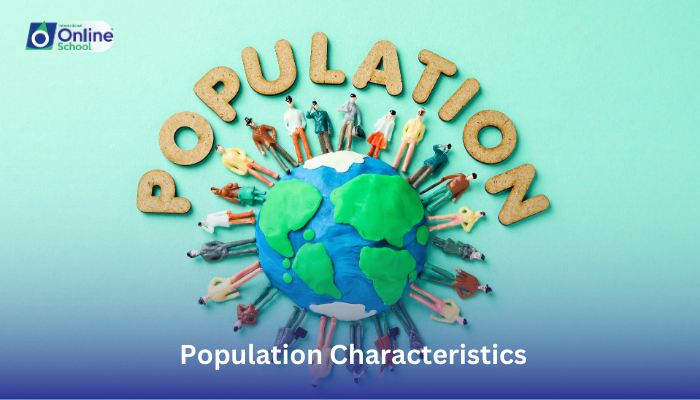
Learning Outcomes:
i. Define and explain key population characteristics like size, density, distribution, carrying capacity, and minimum viable size.
ii. Analyze the relationships between these characteristics and their impact on population dynamics and ecological patterns.
iii. Appreciate the importance of understanding population characteristics for conservation and environmental management.
Introduction:
Imagine a vibrant city, bustling with life. But within this seemingly chaotic crowd, there's a hidden order, a set of characteristics that define the city's existence. Today, we turn our gaze not to the city itself, but to its inhabitants – the individuals that make up its population. In this lesson, we embark on a journey to explore the fascinating world of population characteristics, delving into the secrets that shape their dynamics and impact the ecosystems they inhabit.
i. Counting Heads: Population Size:
The most fundamental characteristic of any population is its size – the total number of individuals present in a specific area at a given time. A thriving population of deer in a forest, a colony of ants in a decaying log, each has a size that influences its interactions with the environment and other species.
ii. Crowding Together: Population Density:
But simply knowing the size doesn't tell the whole story. Population density, which refers to the number of individuals per unit area, gives us a better picture of how crowded a population is. Imagine a dense forest teeming with wolves, compared to a sparse desert where wolves might be few and far between. Density influences competition for resources, disease transmission, and even predator-prey interactions.
iii. Spreading Out: Population Distribution:
Populations rarely exist as evenly dispersed groups. They might be clumped together, like a school of fish in the ocean, or evenly spaced, like trees in a well-maintained orchard. Understanding population distribution is crucial for understanding resource utilization, breeding patterns, and the spread of diseases.
iv. Finding the Limit: Carrying Capacity:
Every environment has a finite capacity to support a certain number of individuals. This is known as the carrying capacity. Imagine a pond with limited resources – like food and space – that can only support a certain number of fish. Exceeding the carrying capacity can lead to resource depletion, competition, and even population decline.
v. Size Matters: Minimum Viable Size:
But numbers aren't just about abundance. Populations also have a minimum viable size, the smallest number of individuals needed for long-term survival. Imagine a small population of endangered tigers – if their numbers fall below this minimum, they risk genetic diversity loss, reduced breeding success, and eventual extinction.
vi. The Dance of Dynamics:
These characteristics are not static; they are constantly interacting and influencing each other. Changes in population size can affect density, distribution, and even carrying capacity. Birth rates, death rates, immigration, and emigration all play a role in this dynamic dance.
Understanding population characteristics is not just a scientific exercise; it's a vital tool for conservation and environmental management. By analyzing these characteristics, we can predict population trends, assess extinction risks, and develop strategies for sustainable resource management. Remember, each individual, from the majestic eagle soaring through the sky to the humble earthworm beneath our feet, contributes to the dynamics of its population. By appreciating the intricate interplay of these characteristics, we gain valuable insights into the delicate balance of life and our role in ensuring its continued existence.